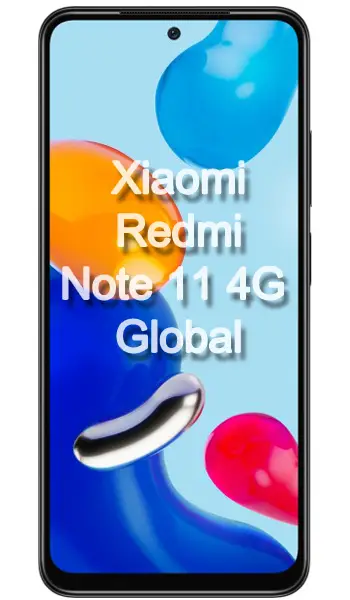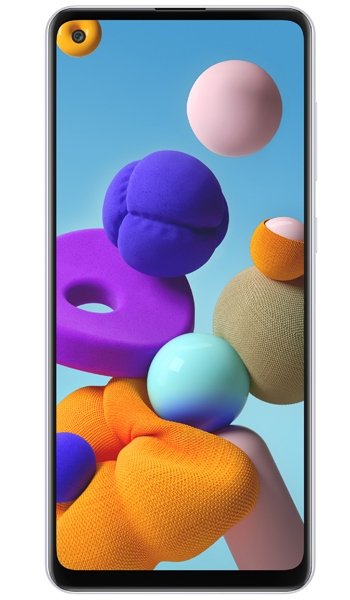Xiaomi Redmi Note 11 4G vs Samsung Galaxy A21s Comparison and Differences
Smartphone 1

Xiaomi Redmi Note 11 4G
Smartphone 2

Samsung Galaxy A21s
Smartphone 3
Differences between Xiaomi Redmi Note 11 4G and Samsung Galaxy A21s - Which to Choose?
Reasons to consider the Xiaomi Redmi Note 11 4G:
- Newer model with more recent technology (released in 2022).
- Better display technology with AMOLED screen and higher resolution (1080 x 2400 pixels).
- Higher screen refresh rate of 90Hz.
- More robust protection with Corning Gorilla Glass 3.
- Higher maximum brightness (1000 nits peak).
- Antutu 10 benchmark scores are significantly higher, indicating better performance.
- Fast charging 33W - can charge 100% in 60 mins.
- Has a Qualcomm chipset which generally has better support and performance (Snapdragon 680).
- Stereo speakers for better audio experience.
- IP53 dust and splash protection.
Reasons to consider the Samsung Galaxy A21s:
- Larger display size (6.5 inches).
- Less expensive price in Euros (190 EUR).
- Has a slightly higher SAR EU rating, which may be relevant for some users.
Both phones have their strengths, with the Redmi Note 11 4G being more up-to-date in terms of display quality, performance, and fast charging capabilities. However, the Galaxy A21s might appeal to those looking for a larger screen and a lower price point.
Xiaomi Redmi Note 11 4G or Samsung Galaxy A21s Specs Comparison
or
 Common specs
Common specs
| Brand and model | Xiaomi Redmi Note 11 4G | Samsung Galaxy A21s | |
| Rating | (+0) | (+0) | |
| Release date | 2022, January 26 | 2020, May 15 | |
| Dimensions (HxWxD) | 159.9 x 73.9 x 8.1 mm | 6.3 x 6.3 x 2.91 in | 163.7 x 75.3 x 8.9 mm | 6.44 x 6.44 x 2.96 in | |
| Weight | 179 g | 6.31 oz | 192 g | 6.77 oz | |
| Case | buy from Amazon | buy from Amazon | |
| Colors | Graphite Gray, Pearl White, Star Blue | Black, White, Blue, Red | |
| Battery | 5000 mAh, Li-Po, non-removable | 5000 mAh, Non-removable Li-Po | |
| Approximate price | 160 EUR | 190 EUR | |
| Check price | from Amazon | from Amazon |
 Screen
Screen
| Technology | AMOLED | PLS TFT | |
| Touchscreen | capacitive touchscreen | capacitive touchscreen | |
| Display colors | 16M | 16M | |
| Screen size | 6" in | 6.5" in | |
| Screen area | 99,8 cm2 | 102.0 cm2 | |
| Screen format | 20:9 (height:width) | 20:9 (height:width) | |
| Screen to body ratio | 84,5% | 82.8% | |
| Screen resolution | 1080 x 2400 px | 720 x 1600 px | |
| Screen PPI /points per inch/ | 409 PPI | 270 PPI | |
| Screen protection | Corning Gorilla Glass 3 | ||
| Other specs | - 90Hz -700 nits -1000 nits (peak) |
||
| Screen protector | buy from Amazon | buy from Amazon |
 Camera and Video
Camera and Video
| Rear camera, main | 50 MP, Quad | 48 MP, Quad | |
| Camera specs | -50 MP, f/1.8, 26mm (wide), 1/2.76", 0.64µm, PDAF -8 MP, f/2.2, 118˚ (ultrawide), 1/4", 1.12µm -2 MP, f/2.4, (macro) -2 MP, f/2.4, (depth) |
-48 MP, f/2.0, 26mm (wide), 1/2.0", 0.8µm, PDAF -8 MP, f/2.2, 123˚ (ultrawide), 1/4.0", 1.12µm -2 MP, f/2.4, (macro) -2 MP, f/2.4, (depth) |
|
| Functions | LED flash, HDR, panorama | LED flash, panorama, HDR | |
| Video | 1080p@30fps | 1080p@30fps | |
| Front camera, selfie | 13 MP, Single | 13 MP, Single | |
| Specifications | 13 MP, f/2.4, (wide), 1/3.1", 1.12µm | 13 MP, f/2.2, (wide), 1/3.1'', 1.12µm | |
| Video | 1080p@30fps | 1080p@30fps |
 Performance
Performance
| Operating system - OS | Android 11, MIUI 13 | Android 10, One UI 2.0 | |
| Chipset | - Qualcomm SM6225 Snapdragon 680 4G (6 nm) | - Exynos 850 (8nm) | |
| CPU | - Octa-core (4x2.4 GHz Kryo 265 Gold & 4x1.9 GHz Kryo 265 Silver) | - Octa-core (4x2.0 GHz Cortex-A55 & 4x2.0 GHz Cortex-A55) | |
| GPU | Adreno 610 | Mali-G52 | |
| External memory | microSDXC (dedicated slot) | microSDXC (dedicated slot) | |
| Internal memory | 64GB 4GB RAM, 64GB 6GB RAM, 128GB 4GB RAM, 128GB 6GB RAM | 32GB 3GB RAM, 64GB 4GB RAM, 64GB 6GB RAM |
 Benchmark
Benchmark
| Antutu 10 Total | 302700 | ||
| Antutu 10 CPU | 102930 | ||
| Antutu 10 GPU | 39651 | ||
| Antutu 10 Mem | 87991 | ||
| Antutu 10 UX | 102930 | ||
| Antutu 9 Total | 238450 | ||
| Antutu 8 Total | 117324 | ||
| GeekBench 6 Single Core | 202 | ||
| GeekBench 6 Multi Core | 844 | ||
| GeekBench 6 OpenCL | 665 | ||
| GeekBench 6 Vulkan | 596 | ||
| GeekBench 5 Single Core | 384 | 173 | |
| GeekBench 5 Multi-Core | 1685 | 989 |
 Communication and Connectivity
Communication and Connectivity
| SIM card | Dual SIM (Nano-SIM, dual stand-by) | Single SIM (Nano-SIM)Dual SIM (Nano-SIM, dual stand-by) | |
| Network | GSM / HSPA / LTE | GSM / HSPA / LTE | |
| Bands | -2G - GSM 850 / 900 / 1800 / 1900 - SIM 1 & SIM 2 -3G - HSDPA 850 / 900 / 1700(AWS) / 1900 / 2100 -4G - 1, 2, 3, 4, 5, 7, 8, 20, 28, 38, 40, 41 |
-2G - GSM 850 / 900 / 1800 / 1900 - SIM 1 & SIM 2 (dual-SIM model only) -3G - HSDPA 850 / 900 / 1900 / 2100 -4G - LTE |
|
| Speed | HSPA 42.2/5.76 Mbps, LTE-A (CA) | HSPA 42.2/5.76 Mbps, LTE-A | |
| GPRS | Yes | Yes | |
| Edge | Yes | Yes | |
| Wi-Fi | Wi-Fi 802.11 a/b/g/n/ac, dual-band, Wi-Fi Direct, hotspot | Wi-Fi 802.11 a/b/g/n/ac, dual-band, Wi-Fi Direct, hotspot | |
| GPS | Yes, with A-GPS, GLONASS, BDS, GALILEO | Yes, with A-GPS, GLONASS, GALILEO, BDS | |
| NFC | Yes (market/region dependent) | Yes | |
| USB | USB Type-C 2.0, USB On-The-Go | 2.0, Type-C 1.0 reversible connector | |
| Bluetooth | 5.0, A2DP, LE | 5.0, A2DP, LE | |
| Harmful irradiation |
SAR EU - 0.42 W/kg (head) 1.54 W/kg (body) |
 Music and Audio
Music and Audio
| Radio | FM radio | ||
| Headphone jack | Yes | Yes | |
| Others | - 24-bit/192kHz audio |
 Other features
Other features
| Sensors | - Fingerprint (side-mounted), accelerometer, gyro, proximity, compass , Infrared port | - Fingerprint (rear-mounted), accelerometer, gyro, proximity, compass | |
| Other extras |
- Fast charging 33W, 100% in 60 min -Power Delivery 3.0 -Quick Charge 3+ - IP53, dust and splash protection |
- Fast charging 15W |
|
| Versions |
- Versions: SM-A217F/DS |
Reviews and Opinions on Xiaomi Redmi Note 11 4G and Samsung Galaxy A21s
If you had to recommend one of these phones to a friend, which one would it be and why? Share your arguments using the Add Opinion button!
